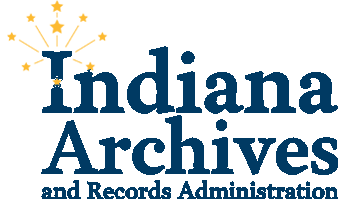1816 - Creation
The Ordinance of 1787 establishing the Northwest Territory set a number of criteria which individual territories had to meet in order to qualify for statehood; the principal one was that the population of the area had to reach a total of 60,000 free inhabitants. When the Indiana Territory met those criteria, the US Congress passed an enabling act on 19 April 1816, authorizing it to adopt a state constitution and form a state government.
On 13 May of that same year, delegates for the constitutional convention were elected. They met in Corydon, Harrison County, on 10 June and adjourned soon after, on 29 June, their work done. The delegates were able to work so quickly because they essentially adopted a standard constitution. For the most part, they simply copied from the Ohio Constitution of 1802 and the Kentucky Constitution of 1799. The total cost of the convention was $3,076.21.
The result, Indiana's Constitution, was never submitted to the people for ratification; it took effect on 29 June, the day the convention adjourned. Elections of state officers and members of the General Assembly followed soon after, on 5 August. The first General Assembly convened on 4 November and the first governor, Jonathan Jennings, assumed office on 7 November.
The Constitution, with some modifications, remained in effect until 1851. In that year, an entirely new constitution was put into place, as the state reeled under the weight of the de facto bankruptcy caused by its improvident internal improvements schemes.
For more information, see Charles Kettleborough, Constitution Making in Indiana, vol. 1 (Indianapolis, 1916).
